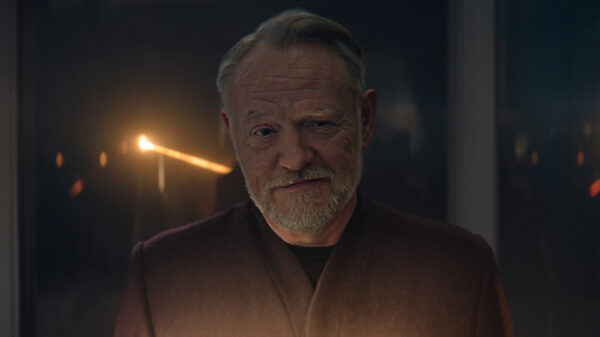Foundation season 3 review — promising signs in the first few episodes paid off with a stunning conclusion
At the midpoint of Foundation season 3, we were pleased the story seemed better aligned to Isaac Asimov’s novels (see the wiki entry for details on those). We could see the shape of the twist from Foundation and Empire coming, and looked forward to seeing it play out. We’ll avoid specifics in the review which might well spoil the ending, just encourage people to watch. Soon.
Alignment to the novel
The original story comes to a climax in the library on Trantor (capital of the decaying empire), with a group of characters all managing to end up in one spot. There’s a surprise twist, a sudden murder and the resolution of the threat from mutant super-psychic the Mule. Most of the pieces are in play on screen, from Alexander Siddig’s Ebling Mis a Foundation scientist; Pilou Asbæk’s Mule, Synnøve Karlsen as Bayta Mallow, a social media influencer (they still have them in the far future); Cody Fern as Torran Mallow (her husband, they tried an antiquated ceremony); and Troy Kotsur as Preem Palver, the First Speaker of the Second Foundation (set up to keep psychohistorian Hari Seldon’s (Jared Harris) plan working). There’s even Tómas Lemarquis as enigmatic balladeer Magnifico Giganticus.
But there’s more
Unlike the novels, the TV has kept Hari Seldon in play (mostly as a sophisticated AI hologram), and also his student Gaal Dornick (Lou Llobell). This is by far Llobell’s strongest season in terms of driving a lot of the plot and having a wide range of things to do. It also bring the robot Demerzel into play (at the time the original three novels were written, this was decades away in the writing), played by Laura Birn. As we said before, Demerzel is closer to the character from the books, but also has a key role in trying to keep the Galactic Empire in power, long past the best before date in Seldon’s plan. She is committed to the so-called Genetic Dynasty.
This is inspired. Centuries ago, emperor Cleon I had himself cloned. At any one time, three clones are in power: the youngest called Dawn (Cassian Bilton), the main power Day (Lee Pace) and the older Dusk (Terrence Mann). None of this is in the books. In seasons 1 and 2 they felt out of place (if you were looking for the TV to stay close to the books) but by season 3 are a strong metaphor for the collapse of their one Empire.
And after that ending, what next?
Without giving too many details, the essence of the original story is maintained (not everyone is who you think they are) and for newcomers, there’s a nice twist. For those expecting the narrative from the novel, it’s a big reveal (perhaps hinted at a little) when identities are revealed and many character die, where the books veer away from violence, making it more powerful when it occurs.
There’s then the whole disintegration of Empire at the hands of one of its own, some very strong material for Day in particular (though Dusk’s madness comes very close), and an awful if perhaps over-graphic end of much we took for certain about the Cleons. We even get a teaser of the bigger picture later created by Asimov when he returned to the series decades after writing it.
What would a next season look like? Who is still standing? For now, let’s just get our collective breaths back, and admire those behind this magnificent series. And think about when to rewatch season 3 and watch all the pieces come together to create the ending.
![]()

